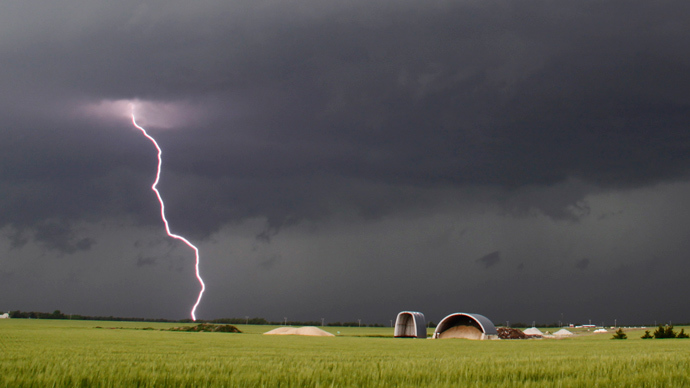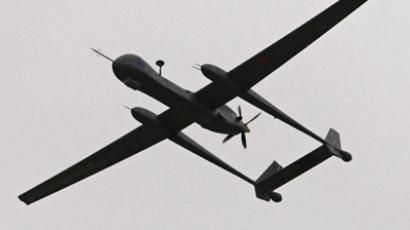Pentagon-sponsored study opens door for super lasers, weather control

Pentagon-sponsored researchers have made the reach of an intensive laser beam longer by an order of magnitude. Researchers say their discovery can be used to seed rain and trigger lightnings, but the potential scope of applications is much larger.
A short intensive laser pulse produces plasma in its path. This plasma can interact with charged particles in a storm cloud and change weather, starting rain on request and control lightning bolts. But making laser beams travel into the clouds uninterrupted was always a challenge, because beams powerful enough to control weather dissipate very quickly.
A team of optical researchers at the University of Arizona and the University of Central Florida have found a way around this obstacle. They used a second lower-intensity laser beam to ‘dress’ the primary one and act as a power source for it. This extended the range of the high-intensity beam from just several centimeters to several meters in lab conditions.
The potential of the technology goes beyond our interaction with the planet’s atmosphere. It can be applied in areas like remote sensing for spectroscopy, allowing analyzing chemical compounds from long distances, or channeling of microwaves. The US Department of Defense, which green-lit the research with a $7.5 million grant, certainly thought it was worth the investment.
As for weather control, the team needs to find a way to send a laser beam hundreds of meters into the sky and sustain its energy, researchers say. Their report, entitled ‘Externally refueled optical filaments’, was published in the journal Nature Photonics.
The usage of lasers for weather control has been researched for some time. Not any laser is suited for the job however. It must be powerful enough and produce a very short burst.
“When a laser beam becomes intense enough, it behaves differently than usual – it collapses inward on itself,” explained study co-author Matthew Mills, a graduate of the Center for Research and Education in Optics and Lasers (CREOL) at University of Central Florida. “The collapse becomes so intense that electrons in the air's oxygen and nitrogen are ripped off creating plasma – basically a soup of electrons.”
The resulting plasma fights the surrounding air for control, producing a pathway, or ‘light string’. This process of filamentation, as it’s called, creates “excited electrons” everywhere it passes. Those electrons are the building blocks of lightning. They can be used to create and control it.
Unfortunately such filaments are not stable and are not long enough to reach a cloud. Mills and others found a way to create an “extension cable” for the laser: by “dressing” the initial super-intense laser beam with a lower intensity one. This secondary doughnut-shaped “dress” beam gives extra energy to the initial beam mush like a fighter jet gets extra fuel from a refueling aircraft to stay longer in the air.
"Since we have control over the length of a filament with our method, one could seed the conditions needed for a rainstorm from afar. Ultimately, you could artificially control the rain and lightning over a large expanse with such ideas," Mills believes.
The research is broader than just offering a new way of seeding clouds and protecting buildings from lighting, both of which can be done by more conventional methods. They have managed to extend their high-intensity laser from a few centimeters to a few meters, and it’s only a matter of time until we are also able to “selectively guide microwave signals along very long plasma channels, perhaps for hundreds of meters,” professor Demetrios Christodoulides told the UCF website. This could mean a whole host of science applications and measuring capabilities in areas we could not previously get close enough to work with without getting obliterated by lightning.
But bringing together Pentagon’s interest and weather control gives a somewhat sinister tone to the study, at least for those inclined to see it. For example the United States’ HAARP facility in Alaska, which studies the ionosphere, has a number of conspiracy theories associated with it, claiming that it can control weather and even trigger natural disasters in remote areas on the command from the US generals.














